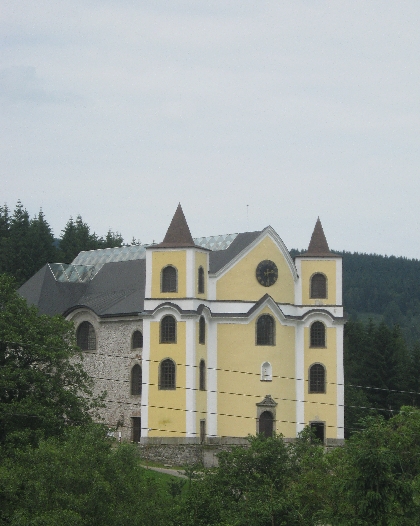
Neratov Church © Ricky Yates
Neratov is a small village located on the eastern side of the Orlické hory, in the valley of the Divorká Orlice – ‘Wild Eagle River’, which forms the border between the Czech Republic and Poland. Between 1723-33, a large baroque Church was built here, to house a statue of the Virgin Mary that had been previously donated by the parish priest of Rokynice v Orlických horách, situated on the other side of mountain range. Thus Neratov became a place of pilgrimage and Marian devotion.
The Church, built on a rocky promontory overlooking the village, is most unusual in one particular aspect. It has a north-south, rather than the traditional east-west, axis. The only other Church I know built in this manner, is the new Coventry Cathedral, which is at right-angles to the old ruined Cathedral.
On 10th May 1945, two days after the Second World War was supposed to have come to an end, the Church was hit by a Soviet Red Army anti-tank rocket and was gutted by fire. The roof and interior fittings were completely destroyed, just leaving the exterior walls standing. Then in 1957, some supporting arches collapsed. In 1973, an order was issued for the demolition of the ruined remains and the only reason the building survived, was because the local communist authorities, lacked the finances to put the demolition order into effect 🙂
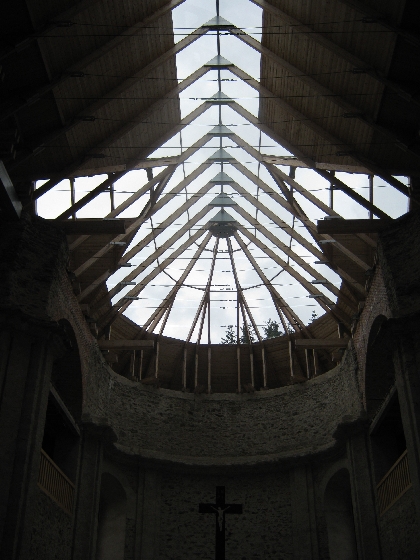
The new glass roof of Neratov Church © Ricky Yates
Following the Velvet Revolution of 1989, moves began to be made to preserve and then restore the Church. In 1992, it was declared the equivalent of a British ‘listed building’. Then in 2006-2007, it was completely re-roofed. This has been done in the most imaginative way with timber framing supporting clear glass, allowing a remarkable amount of light into the interior of the Church. The money to carry out the restoration came from a variety of sources including Germany. This website in German, is maintained by supporters of the project. It uses the name Bärnwald, which is how the village is known in German.
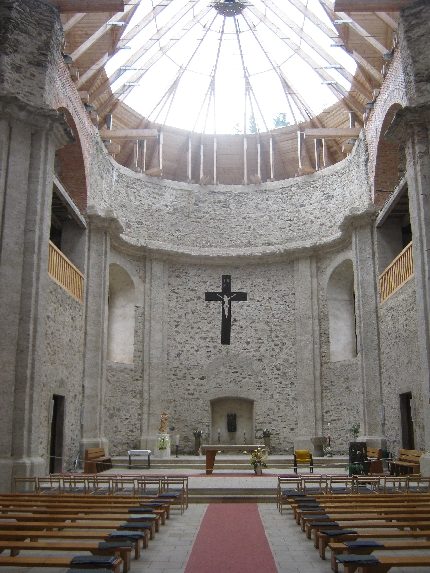
The interior of Neratov Church © Ricky Yates
Both Sybille and I very much enjoyed our ‘pilgrimage’ to Neratov – we did walk around 15 km from Rícky v Orlických horách to get there! Unlike so many Czech Churches, Neratov Church is kept open during daylight hours. Also, because of the 1945 fire, unlike so many baroque Churches in Prague and elsewhere in the Czech Republic, the interior walls are plain with just a large crucifix on the north wall behind the altar, and a small new statue of the Virgin Mary in the north-west corner. It is very hard to find the right words to articulate the real sense of peace and holiness that I felt whilst being there.
The village itself has also been brought to life by the Neratov Association, which has provided sheltered housing and employment, for people with light to medium mental handicaps. As explained in a small colour leaflet that I picked up in the Church, ‘the aim is to help these people to live a free, independent, and responsible life with the support of a team of assistants in a friendly family-like environment’.
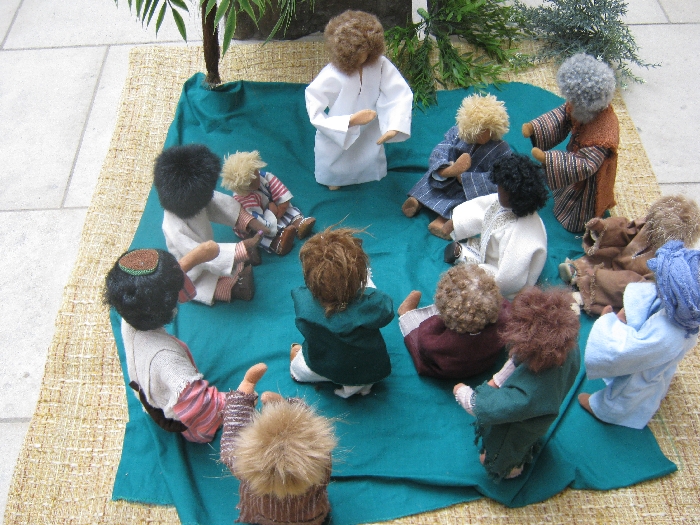
Jesus asking questions of his twelve disciples © Ricky Yates
I suspect that these figures, sitting in front of the lectern in the sanctuary of the Church, are the work of some of those in the care of the Neratov Association. The text in Czech, of Luke 9. 18-20, was on display alongside them. Jesus is asking first, ‘Who do the crowds say I am?’ And then more pointedly, ‘Who do you say I am?’
Our visit to Neratov was the first of several days of fascinating discoveries, as we explored the Orlické hory. I hope to write and post more about our experiences in the coming days.
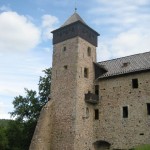



It’s definitely one of the most fascinating churches I’ve ever seen… I was there sometime in the earlier 2000s, before the roof was put up and the outer walls restored. I am really glad that they put up the glass roof, because it retains the strange effect of standing in a church under open skies…
Yes Hana – I’m sure that part of the thinking behind the installation of a glass roof, was to maintain the feel of being under open skies, as the Church was back in use for special events, even before the new roof was erected in 2006-2007. You should visit again as I’m sure you would enjoy it, just as much as Sybille & I did.
What an interesting church. Well worth the 15 kms walk..
A fascinating Church Heather – certainly well worth the walk!
This is very much my kind of church, Ricky – uncluttered, even austere but full of the sense of the numinous. The glass roof is an inspired idea. A fascinating place and a small miracle it survived at all.
Exactly my sentiments Perpetua – It certainly is a miracle that it has survived, despite having virtually no repair work carried out to it for nearly fifty years from the time of the devastating fire.